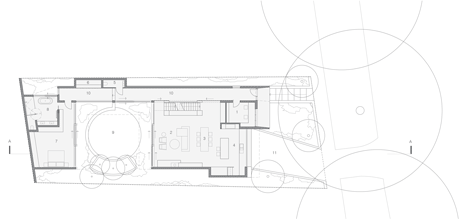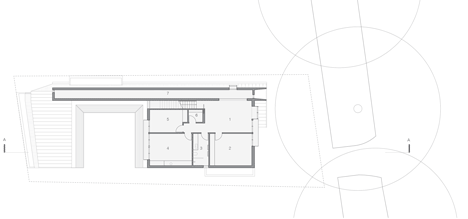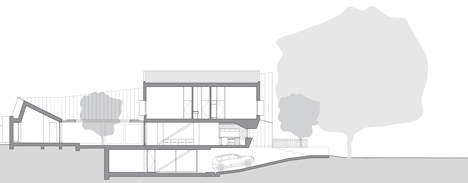Lake Wendouree House by Inarc features a spiked entrance and a car turntable
A basement garage with a turntable for cars helps reduce the space required for this house in the Australian city of Ballarat, designed by Melbourne architecture firm Inarc (+ slideshow).
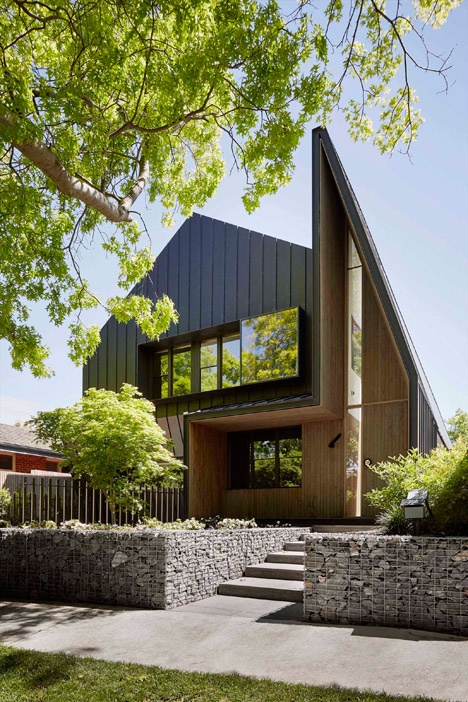
Ballarat is situated around the shores of Lake Wendouree in the state of Victoria, roughly 65 miles north-west of Melbourne. Inarc designed the house for a 480-square-metre plot on the edge of one of the city's heritage precincts, just 100 metres from the lake.
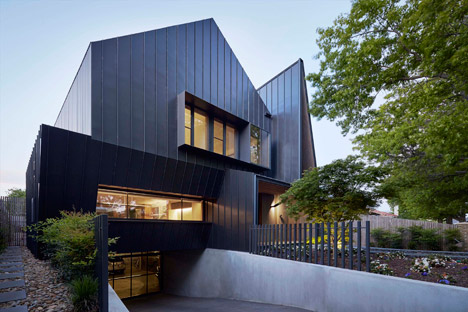
The clients are a couple whose children have moved on from the family home, so they wanted to downsize but still have space for visitors.
The plot's limited dimensions made it difficult to accommodate the requisite parking and outdoor spaces, so the architects created a subterranean parking level featuring a turntable that allows cars to be moved into different positions.
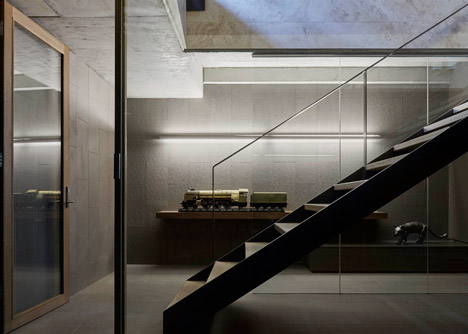
"Usually the blocks in Ballarat are quite large but in this case we had to fit quite a lot into the programme," Inarc director Reno Rizzo told Dezeen. "This is the reason for the basement, which is unusual for a place like this."
"Normally in a basement you have to manoeuvre your car around and we couldn't afford to waste that space so we thought a turntable was the best way to still leave quite an attractive entrance to the house," he explained.
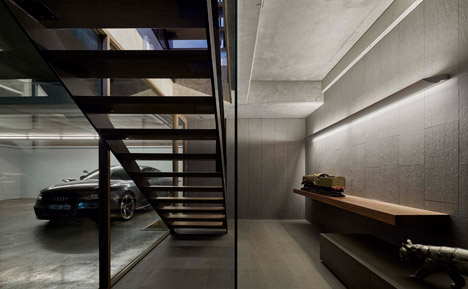
A ramp descends from the street to the garage, which has parking spaces for three cars as well as a laundry and storage area.
A lobby-like space with an open staircase leading to the house reflects the basement's role as the property's most commonly used entrance.
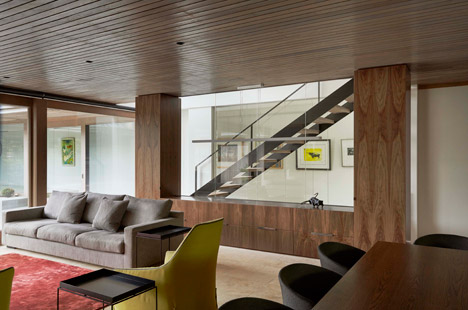
The design was also influenced by requirements set out by the local heritage officer to retain the neighbourhood's architectural style.
The house's frontage reinterprets features that are common among historic properties in the neighbourhood. The gabled elevation, an exaggerated spiky facade detail that recalls traditional chimneys, and a porch that projects from the frontage all reference the local vernacular.
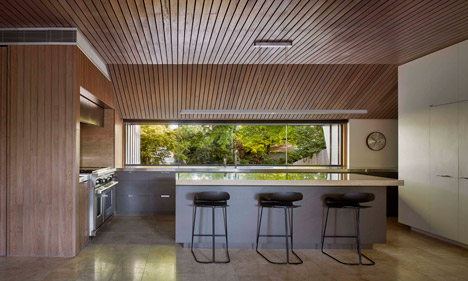
"The chief heritage architect in Ballarat put a fair bit of pressure on us so we hid the basement behind a stone gabion wall, and the front of the house has that gable-roof appearance that comes right through to the back," Rizzo said.
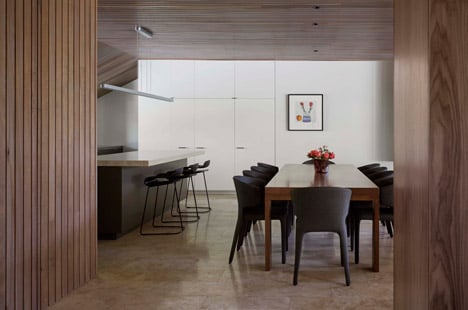
"The other thing we did to play down the house's dominance on the street was to clad it all in one material," he added. "The charcoal zinc material sits well behind the huge avenue of oak trees on this relatively narrow street."
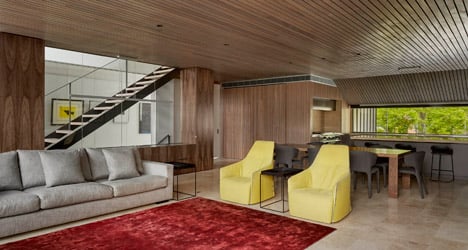
Above the front door, the roofline stretches upwards to a sharp point that forms the chimney-like element. This section of the facade projects outwards to form a porch and is lined with contrasting timber to give a warm and welcoming feel to the entrance.
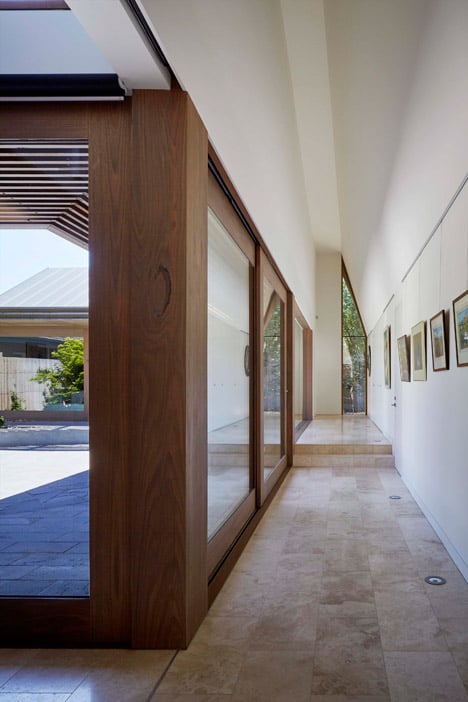
A narrow strip of glass next to the door illuminates a hallway gallery that extends along one side of the ground floor. The ceiling of the double-height gallery descends as it reaches towards the rear of the house, where it meets the single-storey bedroom suite.
The hallway extends past a kitchen, dining and living area with a glazed wall that faces onto a landscaped courtyard.
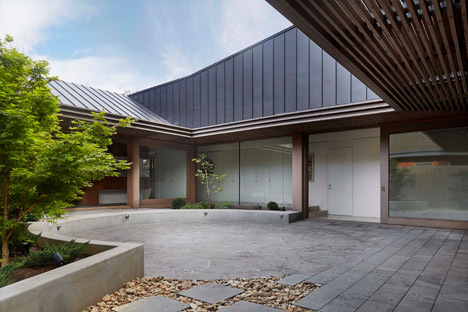
Most of the rooms spread across the house's two main floors overlook the courtyard, including the bedroom at the far end and two bedrooms on the upper storey.
"The traditional approach with larger suburban blocks in Australia is to have the front yard with the house in the middle and then a back yard, but in this case that simply wouldn't work because you'd end up with a dark space in the middle," Rizzo explained.
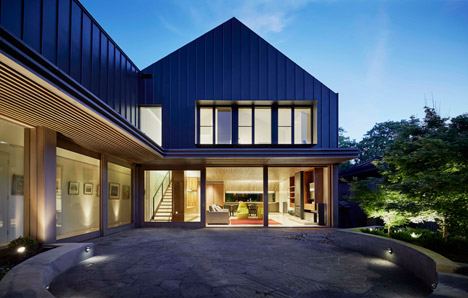
"The courtyard means the sun can penetrate into the living room and both the bedroom and living room get that outdoor outlook," he said.
Interiors throughout the house feature wood that helps to enhance its cosy feel during the long winters the region experiences.

